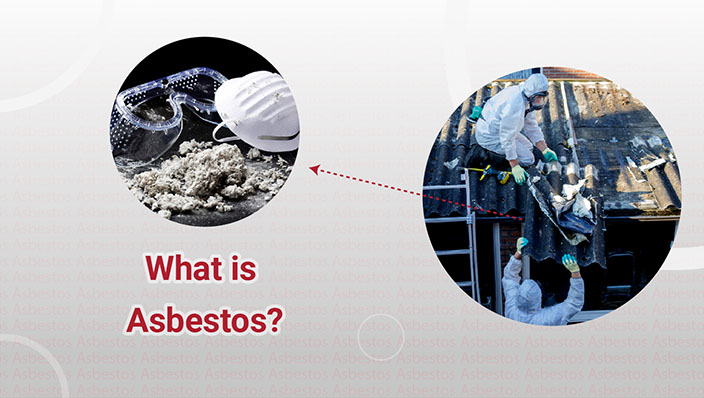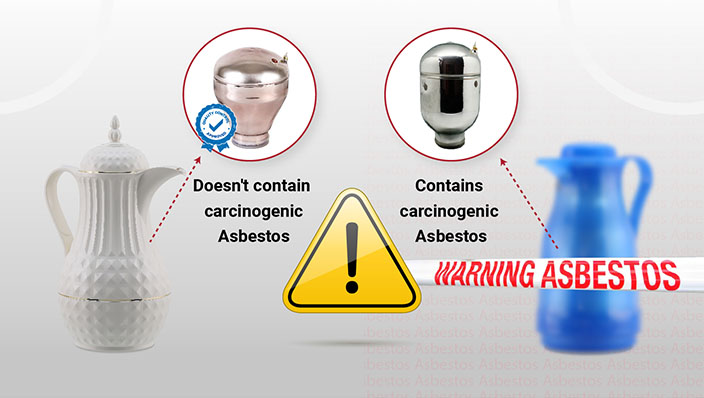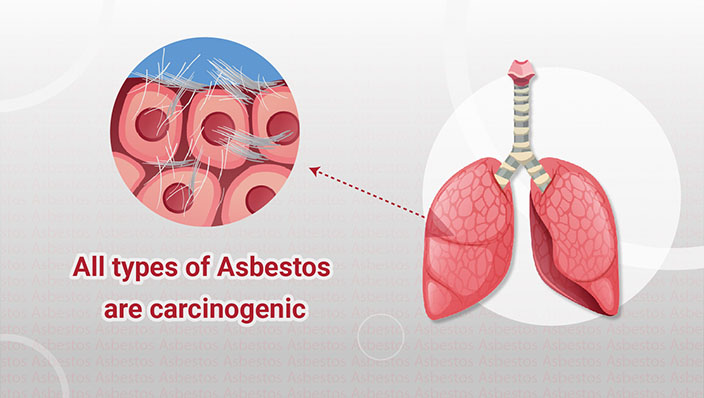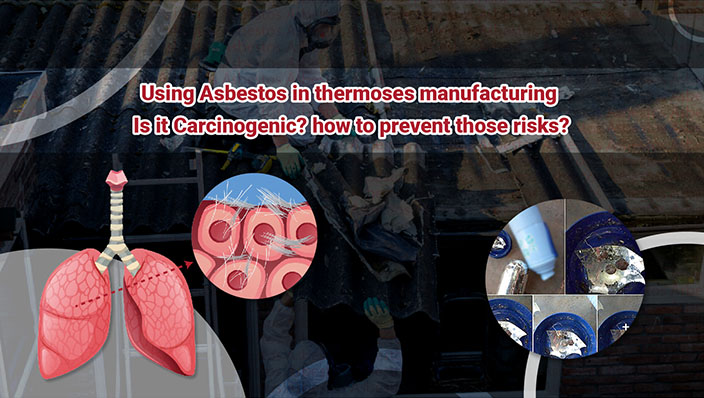Using Asbestos in the vacuum flask industry .. does it cause Cancer?
Even though many initiatives have been launched to raise awareness of the dangers of using the asbestos substance in the vacuum flask industry over the past few years, some of the inferior thermoses still contain asbestos and the traders still sell it in the markets. Which made some customers afraid of buying thermoses until making sure that it’s asbestos-free, especially after many videos on social media discussed the issue of having the three black points in the thermos glass which indicates the existence of asbestos.
Some authorities tried to reduce the people’s attention to the matter by saying that the danger of asbestos is limited to inhaling asbestos in the event that a thermos is broken, but the World Health Organization and the European Union's Rapex Organization had another opinion which we will discuss in the following lines:
Contents:
- What is Asbest?
- The black points in the thermos and its dangers.
- The Saudi Standards and Metrology Authority warns of the inferior thermos.
- World Health Organization: Asbestos is a carcinogen substance.
- The European Rapex System: The use of asbestos in flasks is a serious risk to the health of consumers.
- How to make sure that the flask does not contain Carcinogen asbestos.
- The bottom line.
What is the Asbest?

Asbestos is a mineral substance that resists heat and is used in many industries, such as cement and roofs of homes, as well as kitchen utensils and toys until it has been prohibited officially in 1970, but some countries continued to use it despite all warnings and negative side effects
Asbestos is used in vacuum flasks by adding it to the fibers of the fixation points between the double glass wall, and those black points that we see in the thermos’s glass are placed in the vacuum of air for the purpose of increasing temperature preservation.
The black points in the thermos and its dangers

The black points in the thermos are often three and have a circular shape on the thermos glass, the manufacturers place it in the space between the glass layer and the outer body of the thermos, and the companies use it with different ratios to help in temperature preservation of the liquid inside the thermos.
While some tried to minimize the panic of the citizens by saying that the danger of asbestos is limited to breaking the thermos’s glass, in addition to scratches or cracks occurring to it.
But actually, no one can buy a thermos and ensure that it will not be broken or cracked, because it’s beyond human control in normal cases, moreover, there are many official declarations issued from international agencies to warn of the danger of buying asbestos-containing thermos.
The Saudi Standards and Metrology Authority warns of the inferior thermos

In 2015 the Saudi Standards and Metrology Authority revealed that 14% of the thermos in the market did not match the specifications, because they contained asbestos, which appeared as black spots or black dots at the bottom of the thermos after it inspected samples of thermos in the markets.
This caused concern for families, not just Saudi families, but that prompted many to segment the thermos into two types, inferior thermos that uses asbestos in their manufacture, and high-quality branded thermoses, which are completely free of Asbestos.
Saudi Standards and Metrology Authority recommended people buy high-quality types of thermoses and avoid inferior products to avoid many health risks by making sure of the manufacturer’s name, address, and country of origin.
Learn More about: the types of Dallah past and present and how to prepare Arabic coffee as a professional.
World Health Organization: Asbestos is a carcinogen substance
The World Health Organization had confirmed that all types of asbestos cause lung and throat cancer, and may lead to lung damage if they are inhaled.
In 2004, the use of asbestos killed 107,000 people from lung cancer and asbestosis.
The World Health Organization stressed the need to take preventive measures against Asbestos disease, by stopping the use of all types of asbestos, to get rid of diseases related to asbestos.
There are many economical alternatives to asbestos that can be used in different industries.
The European Rapex System: The use of asbestos in flasks is a serious risk to the health of consumers
The RAPEX SYSTEM confirmed that the use of asbestos in the thermos between the two glass layers, even though it did not in direct contact with the drink, poses a risk to human health, and European countries have banned the sale of asbestos products, and withdrawn them completely from the markets.
You can follow the weekly and monthly reports of the European Repex System To identify products that come into contact with the infringing food and drinks to avoid purchasing them.
The European Rapex System is the system that reports on products that violate the specifications and introduced by the European Union to quickly alert in case of finding products that pose a serious risk to the health of consumers, which is consistent with European legislation that guarantees a high level of protection for the health and safety of consumers.
How to make sure that the flask does not contain Carcinogen asbestos

The use of asbestos is widespread in an inferior thermos, but there are some specifications that confirm that the flask is completely free of asbestos such as:
- There are no black points (dots) in the thermos’s glass. So, customers may check the interior glass of the product and make sure that it is clear of those black circles before purchasing the product.
- Purchase a thermos from a well-known brand as an indicator of good quality, healthy, and free of asbestos products. Also, you may take a look at their website to check quality certificates, reviews, and conformity to the international specifications, not everything that glitters is gold.
The bottom line
- In the event that you already have a thermos that contains those black points, you must dispose of it in the correct way without breaking its glass to avoid inhaling the carcinogenic asbestos which exists between the glass layers.
- A number of international entities concerned with consumer health and safety of products that come into direct contact with food and drinks, such as the World Health Organization and Rapex of the European Union, have confirmed that asbestos is a carcinogen.
- The use of asbestos in the manufacture of thermos is a risk to human health.
- We can avoid the risk of carcinogenic asbestos by using high-quality, branded, wonderful thermoses, which have international quality certificates, and completely free of Asbestos.
After we explained the risks of having asbestos flasks, you must make sure of choosing the best thermoses, by reading a guide to buying tea and coffee thermos with the best prices in the market, so that you can buy a healthy and safe flask with no worries when you serving the Arabic Coffee or any other drink.

